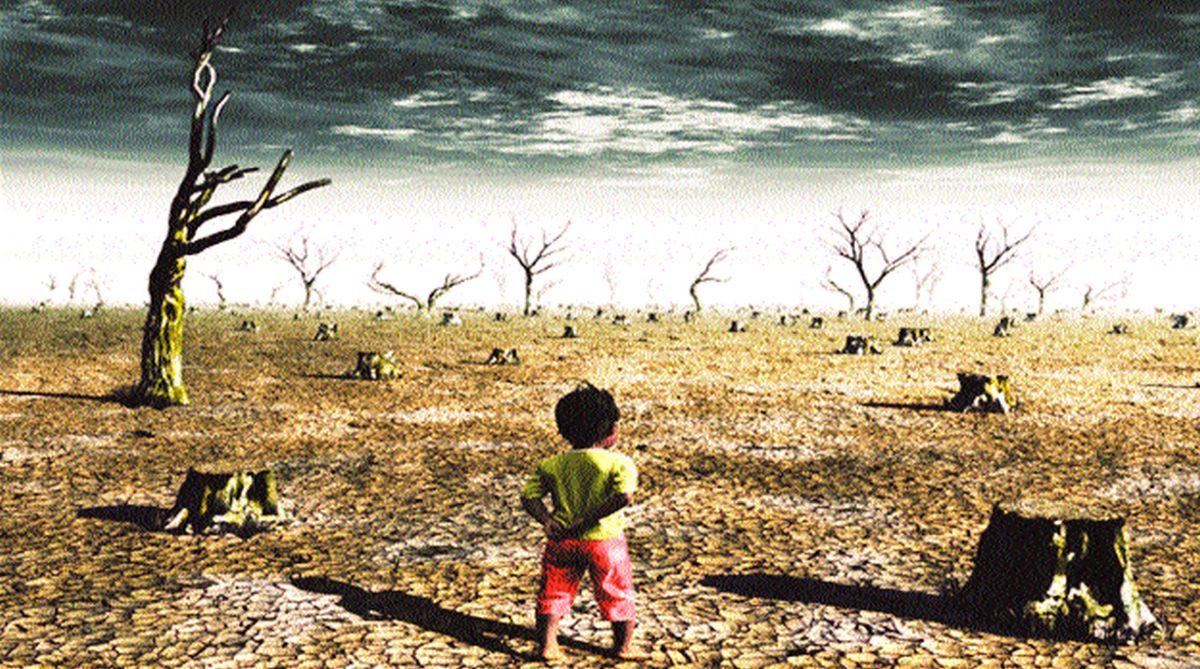While earlier projections of the pace and impact of climate change were also considered to be worrying, many senior scientists are now warning that climate change may in fact turn out to be faster and its impacts bigger than the commonly accepted projections made earlier.
At present the average global temperature is around 1-degree C higher than pre-industrial levels, enough for alarm bells to start ringing loud and clear, and rising at the rate of 0.17 degrees C per decade.
Advertisement
The debate so far has been mainly centered around whether humanity will be able to restrict global temperatures to levels which are at the most 2 degrees Celsius higher than pre-industrial levels.
However, recently published research has raised the possibility of temperatures rising by 4 to 5 degree C even if current emission reduction targets are met. This can happen if a critical threshold is crossed and several tipping points lead to abrupt change.
Such processes include the loss of arctic summer ice, reduction of Antarctic sea ice and polar ice sheets, permanent frost thaw, loss of methane hydrates from ocean floor and weaker land and ocean carbon sinks.
Johan Rockstrom, co-author of this report published in the ‘Proceedings of the National Academy of Sciences’, said, “These tipping elements can act like a row of dominoes. Once one is pushed over, it pushes earth towards another. It may be impossible to stop the whole row of dominoes from tumbling over. Places on earth will become uninhabitable if ‘hothouse earth’ becomes the
reality.”
Rockstrom further said, “We are the ones in control now. But once we get past two degrees, we see that the Earth tips from being a friend to a foe. We totally hand over our fate to an earth system that starts rolling out of equilibrium.”
In other words beyond a point of global warming the friendly systems which protect us can themselves change and turn hostile so that then global warming and related changes will spiral out of control, perhaps reaching around 4 to 5 degrees Celsius above pre-industrial levels.
This will not only lead to intolerably hot conditions in many parts of world but also a sea level rise beyond anything foreseen so far, submerging vast areas in water.
These scientists have said that to avoid such frightening possibilities we have to reduce emissions of course but in addition we also have to create new carbon stores, particularly by increasing forest cover. At a broader level we have to move from exploitation towards stewardship of earth.
The scientists who prepared this report are from the Stockholm Resilience Center, the University of Copenhagen, Australian National University and the Potsdam Institute for Climate Impact Research.
Their report concerns a future several decades ahead, but it was invariably discussed in the context of extreme weather events seen just before the findings of the report were publicised widely early this month.
This year extreme heat wave conditions including vast wildfires have been seen in many countries spread over a very wide area. Eighteen wildfires swept across California. Fires in a coastal area near Athens killed 91 people. About 125 people died in a heatwave in Japan as temperature rose above 40 degree C in Tokyo for the first time.
Despite the fact that public perception of climate change as a serious threat has grown – 61 per cent of people saw this as a big threat in a poll held in 38 countries in 2017 – actual action to check climate change has remained weak.
Three years after the Paris climate accord greenhouse gas emissions were up again. Investments in oil and gas were also on the rise. For the first time in four years, demand for coal rose in 2017. At the same time subsidies for renewable were dwindling in many places and investments had stalled. On the whole, the prospects for moving away from fossil fuel-led energy growth remained bleak.
Even some of the success stories were turning out to be dubious. The one million plus electric cars were held out as progress towards clean energy, but it has been pointed out that these will be getting their energy from an electricity grid that gets two thirds of its power from coal, and the net result is likely to be more carbon dioxide emissions compared to fuel-efficient petrol driven cars.
What is more, the possibilities of getting the promised financial help from rich countries to facilitate rapid progress towards climate change mitigation and adaption in poorer countries are getting much weaker and under the watch of Donald Trump this support may simply not be there to any significant extent at least from the richest donor.
It is therefore very important to make a very clear appraisal of the threat and determine how equal humanity is to the challenge based on current preparations and projections for the near future.
Such an appraisal should involve the best scientists of course but in addition should also involve the best available expertise on this subject from the sides of governance (including national and international governance) as well as public action.
This group should place a comprehensive and updated report on the issue before humanity and also a plan of action which includes not just scientific solutions but also what needs to be done in the critical areas of governance and public action.
The writer is a freelance journalist who has been involved with several social movements and initiatives.











